So come friends, today we will talk on some different topics, today’s topic is what is an e-commerce website. An e-commerce website is one that allows people to buy and sell physical goods, services, and digital products over the Internet instead of in a brick-and-mortar location. Through an e-commerce website, a business may process orders, accept payments, manage shipping and logistics and provide customer service.

Contents

E-commerce (electronic commerce) is the buying and selling of goods and services, or the transmission of money or data, over an electronic network, primarily the Internet. These business transactions take place either in the form of business-to-business (B2B), business-to-consumer (B2C), consumer-to-consumer or consumer-to-business. The words e-commerce and e-business are often used interchangeably. The term e-tail is also sometimes used to refer to transactional processes involving online retail purchases. It is hard to imagine daily life without e-commerce. We order food, clothing and furniture; we register for classes and other online services; we download books, music and movies; and so much more.
History of an E-commerce website
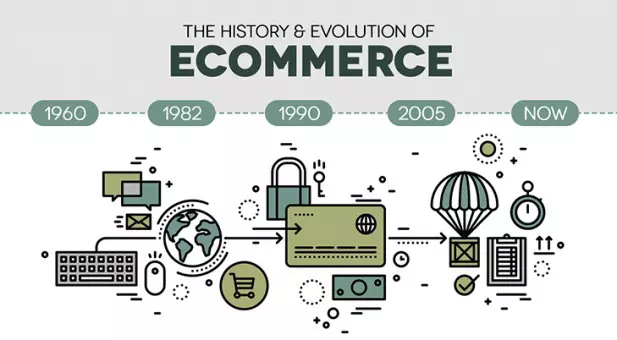
E-commerce began in the 1960s, when businesses began using EDI to share business documents with other companies. In 1979, the US National Standards Institute developed ASC X12 as a universal standard for businesses to share documents through electronic networks. The rise of eBay and Amazon revolutionized the e-commerce industry in the 1990s, after the number of individual users who shared electronic documents increased in the 1980s.
Consumers can now buy many items online, only from e-commerce sellers also known as e-tailers and brick-and-mortar stores that have e-commerce capabilities. Now a days, almost all retail companies are integrating online business practices into their business models.
What are the types of an E-commerce website?
The scope of e-commerce is huge, but the types of sites hosting electronic transactions can be broken down according to the parties involved
1. Business-to-consumer (B2C)
Probably most familiar to the average person, B2C sites enable the exchange of goods or services between a business and a consumer, such as purchasing a T-shirt from your favorite online shop.
2. Business-to-Business (B2B) - Business-to-Business (B2B)
A B2B platform that facilitates electronic transactions between two businesses. For example, if you own a company that sells T-shirts, you can buy those shirts from an online wholesaler.
3. Business-to-Administration (B2A)
A B2A site facilitates electronic exchange between an organization and a public institution, for example, the website of a company designing your city’s web portal.
4. Consumer-to-consumer (C2C)
A C2C site, often referred to as a marketplace, hosts the exchange of goods between 2 or more consumers. Examples include websites such as Etsy and eBay.
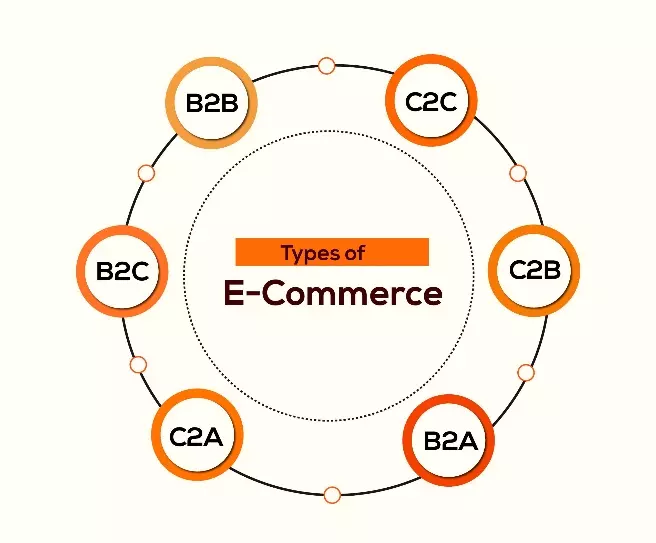
5. Consumer-to-Business (C2B)
On a C2B site, individuals provide goods or services to businesses. This could be a freelance SEO specialist who works with companies in a certain industry or an influencer paid to promote a company’s products.
6. Consumer-to-Administration (C2A)
Similar to B2A, this type of site allows a consumer to provide information, goods or services to public administrations and government organizations – in order to pay for parking tickets on their city’s web portal Think about.
Types of products sold through e-commerce website
The digital component of e-commerce allows sellers to offer a wide range of products, some of which would not be possible to sell at a physical location.
1. Physical Goods
Items like clothing, furniture, food or supplies are tangible products that can be stored in a warehouse. So we can say that sellers display goods on their e-commerce website where consumers can like, save or buy them. On purchase, the business sends the item to the customer
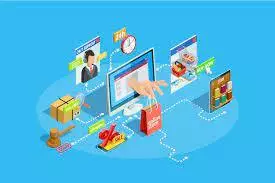
2. Services
E-commerce sites are a popular way to sell services such as consulting, maintenance, teaching, lessons, etc. Whether you’re looking to learn how to code a website or you’re looking for an experienced trainer to help you fix your dog’s barking trouble, there’s no shortage of help online.
3. Digital products
Such as online courses, software, podcasts, music and e-books – are becoming increasingly popular on e-commerce sites as well. The rise of digital products has opened up a whole new way of learning skills on demand. When it comes to selling goods and services online, there are some basic functions that every e-commerce site must include.
How e-commerce website works?

E-commerce is powered by the Internet. Customers use an online store to browse for and place orders for products or services through their own devices. The order related data will be relayed to a central computer known as the order manager. This will then be forwarded to the databases that manage the inventory levels; a merchant system that manages payment information using an application such as PayPal; and a bank computer. In the end, it will go back to the order manager. This is to ensure that store inventory and customer funds are adequate to process orders.
What are the advantages or disadvantages of an E-commerce website?
The advantages of e-commerce include its round the clock availability, speed of access, wide availability of goods and services, easy accessibility and international reach.
Advantages of an E-commerce
1. Availability
In addition to outages and scheduled maintenance, e-commerce sites are available 24/7, allowing visitors to browse and shop at any time.
Also check:
-
5 Best Computer Course in India for Private Job (India में प्राइवेट नौकरी के लिए 05 BEST कंप्यूटर कोर्स)
-
Google jobs in India | Google में चाहिए नौकरी तो कर ये 5 कोर्स - मिलेगा लाखों का पैकेज | Google Jobs
-
Retail Management Career | Retail Jobs | How to get Retail Management Job
-
How to Start Earning as a Graphic Designer?
-
Paramedical Courses | Paramedical Career | कम बजटऔर कम फीस में मेडिकल करियर बनेगा
2. Accessibility Speed
Product and shopping cart pages load in a matter of seconds or less. An e-commerce transaction may involve a few clicks and take less than five minutes.
3. Wide availability
Amazon’s first slogan was “Earth’s Greatest Bookstore”. It can make this claim because it was an e-commerce site and not a physical store that had to stock each book on its shelves.
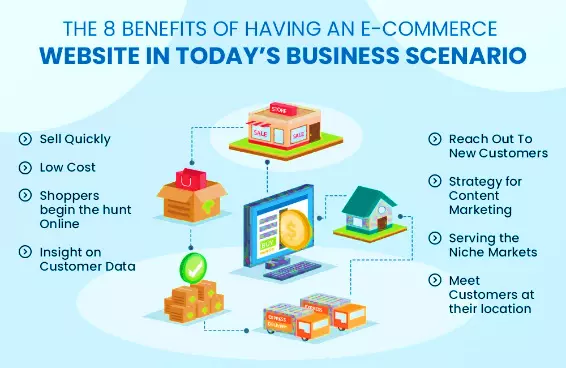
4. Easy Access
Customers shopping for a physical store may have difficulty locating a particular product. Website visitors can browse product category pages in real time and use the site’s search feature to find the product quickly.
5. International reach
If we see like brick-and-mortar businesses sell to customers who physically visit their stores. E-commerce has the potential to expand the customer base of the business.
6. Lower Costs
Pure Play e-commerce businesses avoid the costs of running a physical store like a rent, inventory and cashiers. They may incur shipping and warehousing costs, however.
Disadvantages of an E-commerce
1. Limited customer service
If customers have questions or problems with a physical store, they may refer to a clerk, cashier or store manager for help.
2. Limited product experience
Viewing images on a webpage can give a good understanding of the product, but this is different from experiencing the product directly, like a playing guitar.
3. Waiting Time
In this store, customers pay for a product and go home with it. With e-commerce, customers have to wait for the product to be shipped to them.
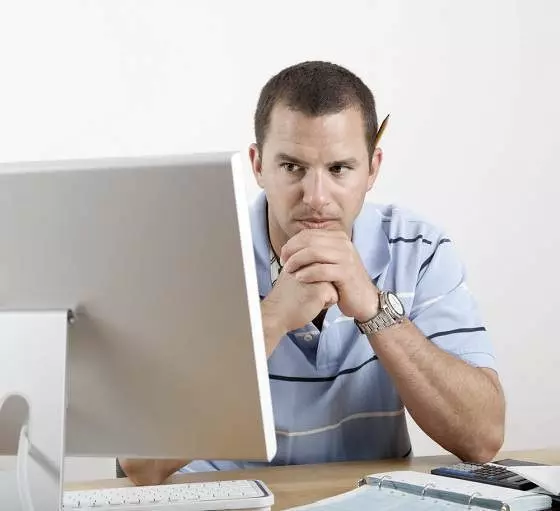
4. Security
So there are skilled hackers can create authentic looking websites that claim to sell well-known products.
Conclusion
E-commerce still represents one of those business methods that when done properly can make a profit even though the stock market and commodities have declined, but e-commerce can still survive and achieve high transactions. Able to. There is tremendous opportunity for e-commerce in Malaysia in course or business. In addition, it is also meant to introduce new technologies and styles in one transaction. The widespread use of e-commerce in the world of internet is actually better to bring the good of the individual or the state.
FAQ
Ecommerce, also known as electronic commerce or Internet commerce, refers to the purchase and sale of goods or services using the Internet and the transfer of money and data to perform these transactions.
An ecommerce website allows you to purchase and sell products and services online. Instead of a physical store, you can sell products over the Internet via a website. It always stores product information, transaction and order management. So there are few examples include sites such as Amazon and eBay.
Having your own ecommerce website helps you to better understand your customers. This includes demographics such as their location, as well as how they found and heard about your website. You can analyze their behavior on your website, such as what they viewed and the way they made purchases from you.
Some of the most important ecommerce features of your website include:
Content Management Ability.
Promotional and discount code tools.
Easy-to-use checkout.
SEO friendly code and layout.
Enhanced ecommerce SEO Capabilities.
Reporting tools and custom report facilities.
A unified blog or article section.
What do you need to build an ecommerce website?
One domain name.
A Web Hosting Provider.
Integrated payment processor.
A platform or device for building your store.
Initial capital to build your products.
Product packaging for shipping.
Business-to-business (B2B) sales are transactions between two businesses for the personal use of the consumer, rather than between a business and an individual consumer.
B2B stands for ‘Business to Business’ whereas B2C means ‘Business to Consumer”. B2B ecommerce uses online platforms to sell products or services to other businesses. B2C ecommerce targets individual consumers.


